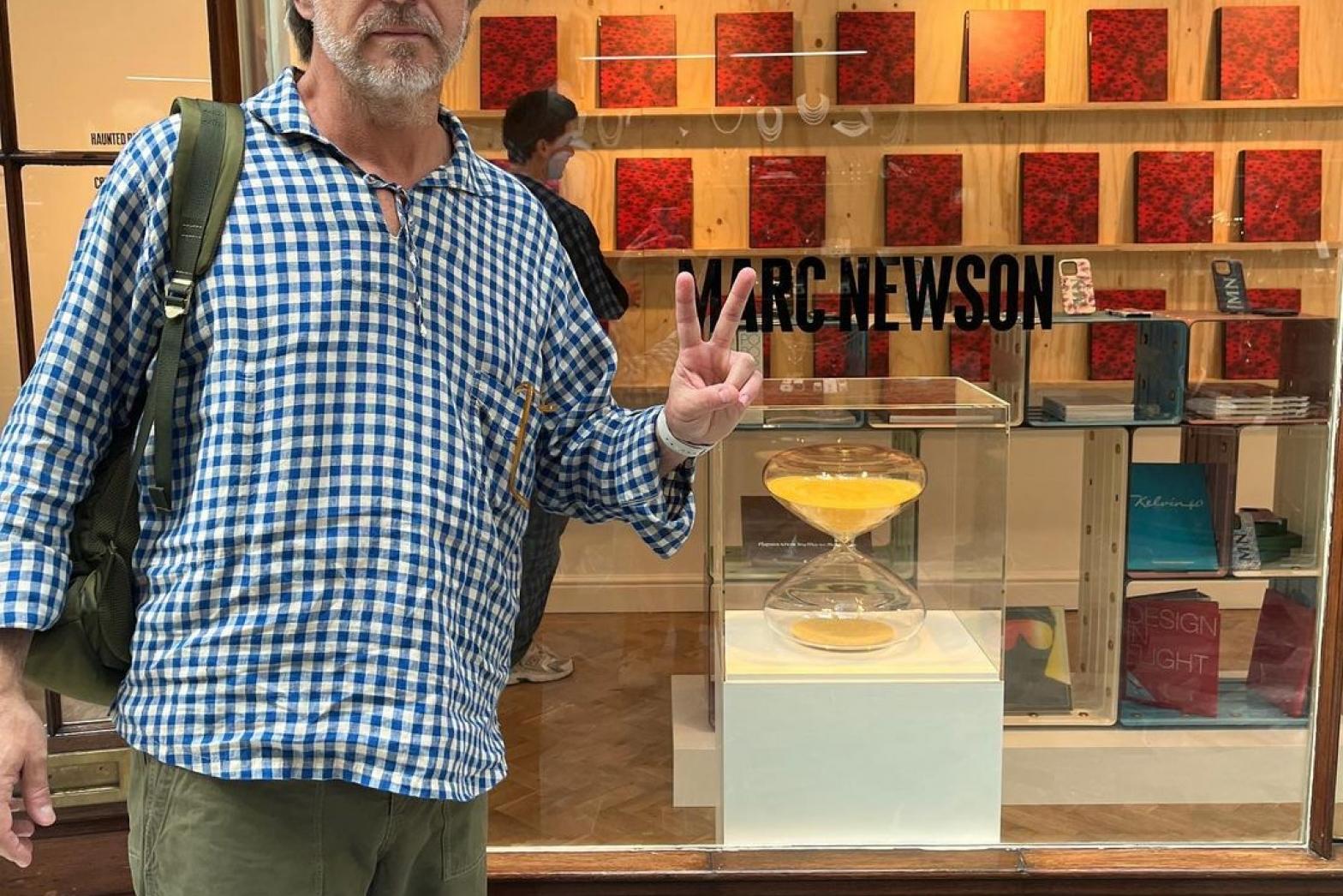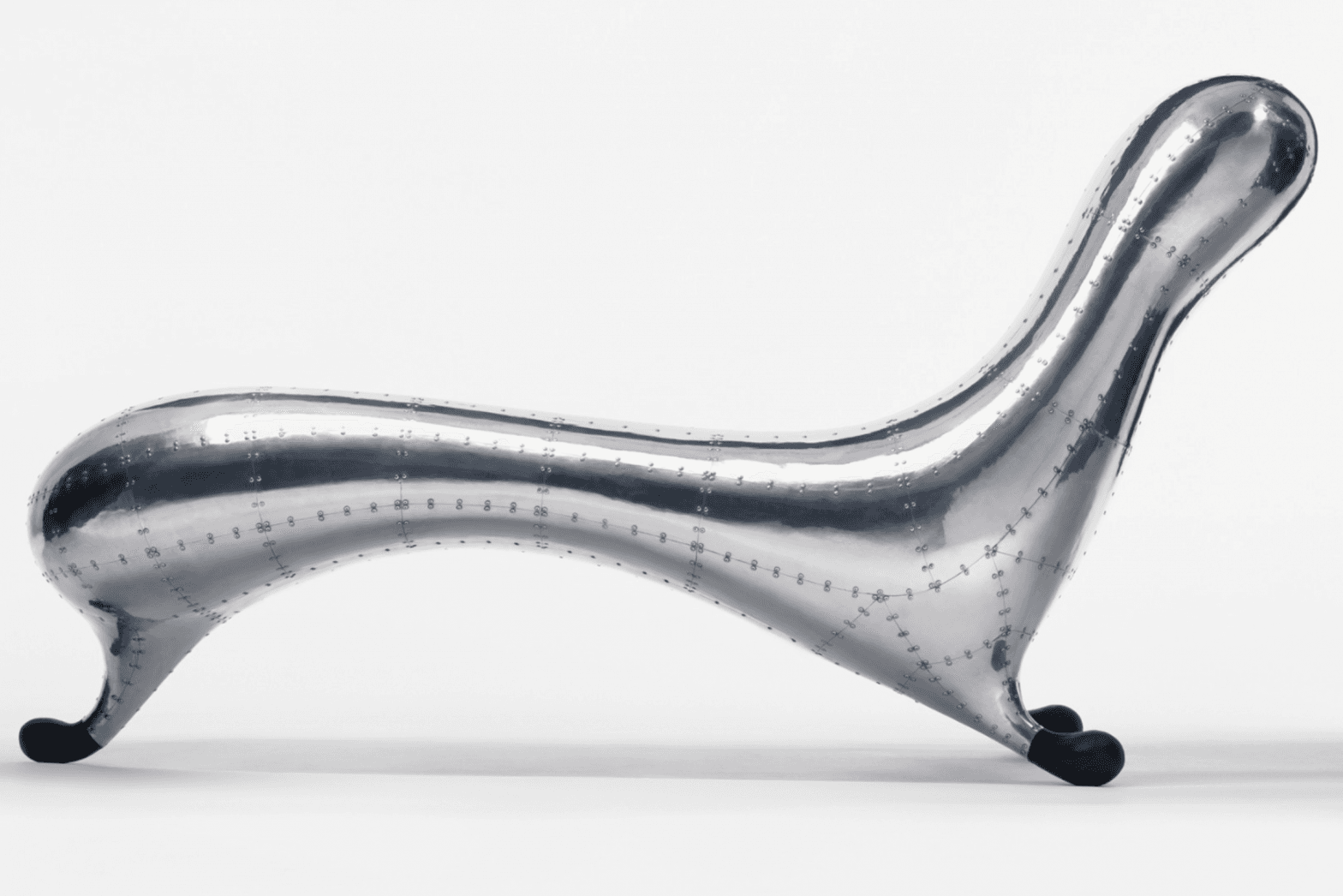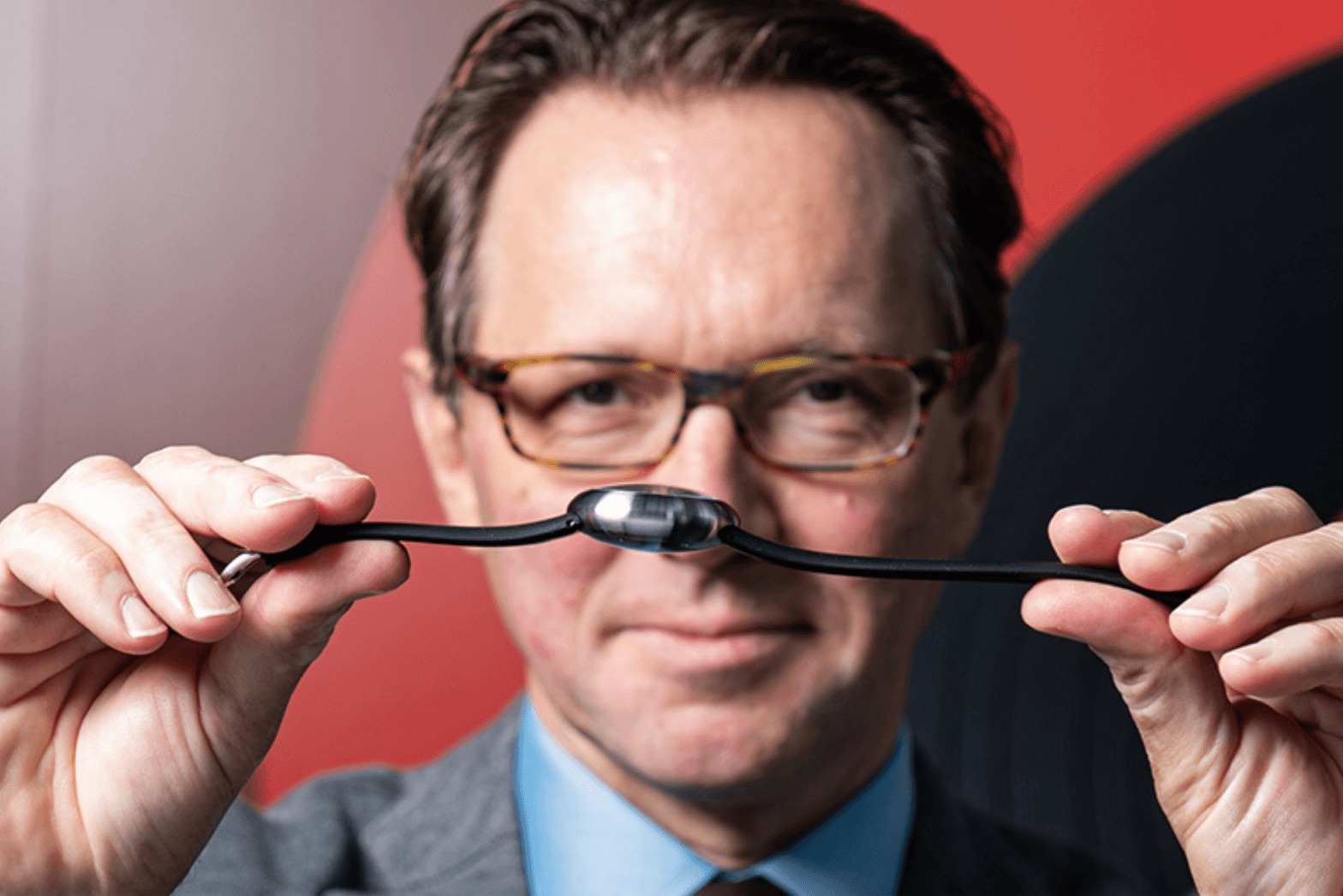
Marc Newson’s no-logo, round pod cases ushered in a new design language for watches in the 1990s. Here’s how it led to the genesis of the Apple Watch and found its way onto the wrists of design-obsessed collectors like Kanye West
Considering the origin story of Ikepod, founded in 1994, the clarity of design should come as no surprise. The brand was the brainchild of Marc Newson, an Australian industrial designer who burst onto the global scene in the 80s with his critically acclaimed Lockheed Lounge (in 2015 one of these biomorphic chairs sold for 2.4 million pounds, making it the most expensive object sold by a living designer). Since then, he has become one of the most prolific and influential industrial designers of the 21st century.
Newson has tried his hand at a dizzying array of objects, from champagne bottles to jumbo jets. He's arguably most famous for a watch — a watch that oddly enough isn't an Ikepod. It turns out the pebble-like design that defines Ikepod is Newson's second most famous watch design; the first is, of course, the Apple Watch.


While Ikepod and the Apple Watch stand out as Newson's most famous watch designs, Nick Kenyon, watch and design journalist argues that time is a driving theme for Newson: "timekeeping is one of his foremost concerns. Not only did he help found Ikepod, but he's also created numerous hourglass designs and worked with Jaeger-LeCoultre on an Atmos clock. While Newson is no longer a part of Ikepod, his influence remains in terms of the brand being design-led and in the overall aesthetic of the watches released today." Newson was front-and-center at the 2015 Apple Watch launch, an event that took place more than 20 years after the founding of Ikepod, but the two designs are unmistakably the creation of the same creative vision. Smooth case lines flow seamlessly into a biomorphic strap to create a cohesive whole. Without Ikepod, the Apple watch would not exist.


Christian-Louis Col, who has owned the brand since 2018, goes a little further in attributing the historical significance of Ikepod, calling it the first-ever concept watch. "The watch is quite simple. It's a case with integrated lugs with a strap or a bracelet. The shape, the function, and the look is the same when you see the watch in a window. They're all the same. Ikepod was the first watch without lugs and an integrated silicon strap, rounded and very comfortable. It was very different — like a concept car that launches new designs, ideas and trends. Ikepod explored new territory. It was about size and comfort, and it was so different from anything else in the 90s."

Ikepod itself was inspired by Newson's 1986 design for a 'Large Pod Watch', a 60mm number designed to be worn over clothes. This design gave Ikepod its signature shape and half the name. The Ike comes from co-founder, the Swiss businessman Oliver Ike. Together, Ike and Newson launched an impressive array of timepieces into the world a few years after founding, monobloc designs like the Hemipode, the Megapode and the fabulously named Seaslug, which is still perhaps the greatest name for a dive watch ever. Because of the reasons Col described above, these watches, made with a designer's sensibility to a luxurious standard, Ikepod — especially the Hemipode — had clear cut through compared to other, older names.

According to Col, it wasn't just the strength of the designs that led to Ikepod's initial success, but the time they were created and the people they resonated with. "It was a fantastic era for independent creators. You were able to source a movement from anywhere, and Marc Newson was quite obsessed with time zones, so on the early models, you had a lot of GMTs, second time zones and so on, all the way through to the Solaris from 2010, which had a dual time zone. They were design watches, but not the sort of design watches you find for 500 francs. It was designed for the people who were buying serious furniture and lamps — it was a new segment. All the tech moguls in Silicon Valley, who were not wearing any watches, started wearing Ikepod, as well as the people who were wearing designer labels were fond of Ikepods. These people bought in; they were the first tribe buying Ikepod."

The late 90s and the early 2000s were a strong time for Ikepod, which had clearly found its 'no-logo' watch, and was determined to make the most of it, with numerous iterations and, in a move that was prescient of today's watch industry's obsession of collabs, made limited edition pieces with Newson's famous friends such as artists KAWS and Jeff Koons. In 2001 Ikepod released the Manatee, which bears an even closer resemblance to Newson's work for Apple. In 2006, the brand released visually arresting Horizon, with a dial that resembled an optical illusion event horizon if you were feeling poetic, or a golf ball if you weren't. But changing tastes challenged the brand, which declared bankruptcy in 2006, only to return briefly between 2008 and 2012. In this period, Newson designed two further unusual timekeepers, the Solaris, a circle-in-a-square shape that looked like an evolved Manatee crossed with a mid-century Junghans wall clock. The last, glorious gasp of Newson's Ikepod was the Hourglass, a phenomenally expensive (yet undeniably cool) sand timer for the modern age with a borosilicate glass body and nanoballs. This truly luxurious object was, in many ways, a perfectly apt final act to Newson's high concept, high design approach to timepiece design.

Except, of course, it wasn't. Newson took the lessons, and indeed some of the actual design elements like the strap design, with him to Apple, where he played an instrumental role in designing the Apple Watch. From 2012 to 2018, Ikepod lay dormant and largely forgotten.

This is where Christian-Louis Col came along. Col, a veteran of the luxury industry, had loved Ikepod since the 90s, and with a little bit of help from a successful Kickstarter campaign, brought the brand back to life. Col's vision of Ikepod was more mainstream, pairing non-Swiss manufacture with the unmissable pod case shape, and bold sizes. Col also continued Ikepod's design focus, bringing in Emmanuel Gueit (famous for his Royal Oak Offshore design) and Alexandre Peraldi, who counts Cartier's Tank Francaise among his work. Showcasing the designers is an uncommon move among the Swiss, where watch designers do not 'sign' their work: "It's a conservative industry where the brand is the king. The people behind the brand are not the stars."
After the relaunch, Ikepod continued as any young brand would, releasing models and slowly (re)building its profile. Things were going well, especially as in the broader watch community, there was a greater acceptance and appreciation of 90s-era watch design. Then something unforeseen happened. In May 2020, the American edition of GQ hit newsstands with Kanye West on the cover. The polarizing superstar, posing against a black All-terrain-vehicle in a creamy Dunhill jacket set against a stark Wyoming sky was wearing, as GQ attributed it, "his own watch (throughout), by Ikepod." Not just any Ikepod, a solid gold Hemipode chronograph with a gold dial. As far as celebrity watch choices go, absolutely nobody saw this coming.
It certainly came as a shock to Col. "It caused many problems, to be honest. Ikepod is still a one-man show. One day I received a call from GQ asking me to identify a picture and I said 'yes, identify what?' Then I saw the watch on the wrist, and many things were buzzing around for months. When it was published, I didn't publish it on my Instagram, I didn't want to take advantage. After it happened, I gained 2000 followers on Instagram, but I also lost 1500. Ikepod is like that, you either love it or you hate it, there are no mixed feelings. With Kanye West, it is the same."

Regardless of the headache the Kanye West-assisted surge in popularity has caused the brand, the market for Ikepod is heating up. Before that GQ cover, there were 400 Ikepod watches on eBay and Chrono24, today, there are 40, and more than half of them are new. Sotheby's recently sold a Hemipode without box and papers for $8000 — a few years ago, this would have been a $1500 watch.
Celebrity endorsement and riding the zeitgeist only gets you part of the way. The rest will only come if the watches make sense. For Ikepod, that isn't an issue. Today the brand hews closely to Newson's most iconic designs, and continues to make them accessible. Speaking about his Ikepod Duopod, Nick Kenyon says "There's so much to like about it from a design perspective, not just for being totally different from everything else I've ever worn, but the brushed finish on the case, the depth and surface texture of the dial, and the legibility of the hands. The case on this model is approachable too, it's 42mm but wears like 39mm. All this makes the brand compelling. It's a totally different design with an important legacy, but they're also attainable to collectors who are looking for a little more fun in their collections. After all, isn't fun the reason we're all here?
